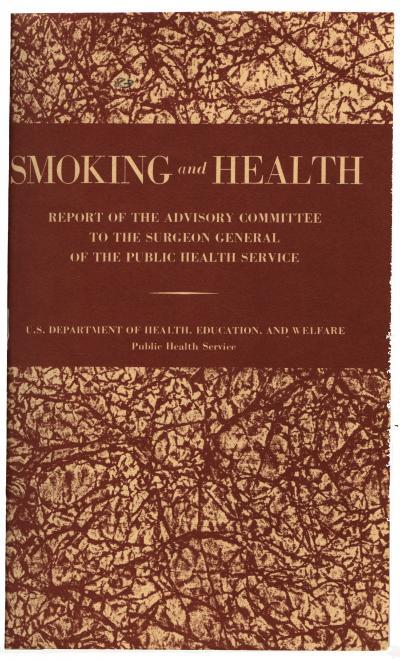Though the War on Drugs has been a complete failure, and led to making poor people poorer and the rich in that market richer, scholars are touting the War on Cigarettes as a complete success - 8 million lives saved, they estimate.
How do you estimate? You create a numerical model to show what might have happened if there had been no action, in this case who died younger than they might have if there had been no warning labels on cigarettes. Obviously that's not science - it's not possible to know who gave up smoking due to warning labels - but the scholars writing in the Journal of the American Medical Association say that 8 million lives have been saved in the United States as a result of anti-smoking measures that began 50 years ago this month with the report from the Surgeon General outlining the deadly consequences of tobacco use.
Last week another estimate claimed 200 million lives would be saved if taxes were raised on cigarettes so these estimates don't always agree. This numerical model estimated the long-term effect of anti-smoking measures over the past half-century, which significantly reshaped public attitudes and behaviors concerning cigarettes and other forms of tobacco.
Using data collected by the National Center for Health Statistics from 1965 to 2009, the team recreated smoking life history summaries for groups born each year starting in 1890. These were used along with national mortality statistics and studies that followed large populations to calculate mortality rates by smoking status. They then estimated the impact of alternative "what if?" scenarios for what might have occurred had the era of tobacco control never happened.
First author Theodore R. Holford, professor of biostatistics and member of Yale Cancer Center, and six other researchers who are part of the National Cancer Institute's Cancer Intervention and Surveillance Modeling Network, say that while perhaps 17 million Americans have died since 1964 due to smoking-related causes, 8 million lives have been saved as a result of increasingly stringent tobacco-control measures that commenced with the report's Jan. 11, 1964, release.
Of the lives saved, approximately 5.3 million were men and 2.7 million were women. The total number of saved lives translates into an estimated 157 million years of life, a mean of 19.6 years for each beneficiary, report the researchers.
"An estimated 31% of premature deaths were avoided by this effort, but even more encouraging is the steady progress that was achieved over the past half-century, beginning with a modest 11% in the first decade to 48% of the estimate what we would have seen from 2004 to 2012 in the absence of tobacco control," said Holford. "Today, a 40-year-old man can expect on average to live 7.8 years longer than he would have in 1964, and 30% of that improvement can be attributed to tobacco control. The gains for women have been slightly less, 5.4 years, but tobacco control accounts for 29% of that benefit."

The 1964 Surgeon General's Report Credit: The US Department of Health, Education, and Welfare, Public Health Service
The tobacco warning was released by then-U.S. Surgeon General Luther Terry. It is seen by many as a pivotal moment in both American public health and 1960s interventionism - the opening move in an ongoing effort by government to control health by controlling behavior. Terry and a committee reviewed some 7,000 articles and talked with over 150 consultants to formulate the report's findings. It was released on a Saturday in order to generate maximum media coverage in Sunday's newspapers. Years after its publication, Terry referred to the report's release as a "bombshell."
The report has since spawned numerous other efforts at various levels of government to modify the public's behavior - today, only smoking marijuana is free of the stigma of the ill effects of smoking. The changes included the now-familiar Surgeon General's warning on the side of cigarette packages, as well as increased taxation, restrictions on advertising, and limiting where people can smoke - efforts which have increased since, making it even more difficult to create a realistic estimate about the value of warning labels on cigarettes.
The number of smokers in the United States has decreased significantly over the past several decades but there are still an estimated 44 million Americans who smoke - about 20% of the U.S. population. 10 percent of smokers will get lung cancer and half of lung cancer patients smoked but it has other effects and hundreds of thousands of lives annually are attributed to it, making it the single largest cause of preventable death in the United States.
"Tobacco control has been a great success story for public health. We have essentially cut in half the number of tobacco-related deaths each year compared to what would have occurred in the absence of this effort. This is very encouraging, but the halfway point also means that there is more to be done," said Holford.






Comments